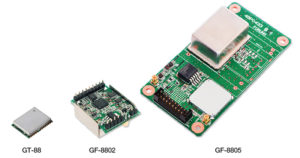
Photo: Furono
Furuno Electric, based in Nishinomiya, Japan, developed GT-88 and GF-8801/02/03/04/05 for users who require Coordinate Universal Time (UTC) time-synchronized signals to meet the new 5G requirements. They provide UTC time-synchronized timing signals (1PPS/10MHz) by receiving GNSS satellite signals. The GT/GF-88 series includes a brand-new algorithm, named Dynamic Satellite Selection, that provides multipath mitigation, especially in urban canyon environments. This algorithm was developed by Nippon Telegraph and Telephone Corporation (NTT) based in Tokyo, Japan.
According to the release, the receivers obtained extremely high stability of 4.5ns (1 sigma), only requiring reception of the L1 band (1575.42 MHz) frequency GNSS satellites. It was achieved by improving position estimation algorithms and optimizing position calculation among several different GNSS satellite constellations. It allows users to achieve 5G-required performance without any changes to existing single-band GNSS antennas.
Additionally, the receivers incorporate the Dynamic Satellite Selection, a multipath mitigation algorithm developed by NTT. Normally typical time synchronization performance deteriorates in urban canyon environments by the effect of multipath. The Dynamic Satellite Selection aims to reduce this time error by one-fifth. This helps provide more flexibility when installing GNSS antennas. Consequently, the GT/GF-88 series now permits GNSS antennas to be mounted on walls, windows of tall buildings, and other difficult reception environments.
